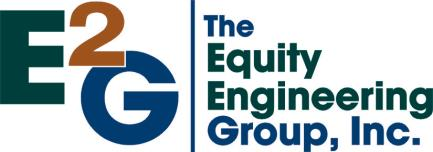RBI: A Quantitative Solution
Made Practical
by Lynne Kaley, P.E. and Phil Henry P.E.





1
Lynne Kaley
Philip A. Henry
•
–
–
–
–
–
–
–
•
–
–
–
–
Materials/Corrosion and Risk Management Engineer
30 Years Refining, Petrochemical and Midstream Gas Processing
Experience
Leader in Risk-Based technology development for plant
applications
Project Manager of API RBI Joint Industry Project since 1996
Member of API committees for development of API 580 and API
581 recommended practices
Developer and Official Trainer for API 580/581 Public Training
course
Vice President and Principal Engineer with Equity Engineering
Principal Engineer, RBI Technology Lead
24 Years Refining consulting experience in heat transfer, fluid
flow and pressure relieving systems
Chairman of API PRS task force for STD520, “Sizing, Selection
and Installation of pressure relieving devices”





BME - Cleveland State University
Purpose of Presentation
Sources
•
–
–
–
–
–
•
–
–
–
–
–
–
Purpose
Highlight differences between the 1st & 2nd edition of API
581
Summarize key aspects and upcoming changes in the 2nd
Edition of API 580
Highlight important areas in API 580 and 581 to the plant
inspector
Discuss the role of the inspector in RBI
Demonstrate the practical application of RBI
API RBI User Group Joint Industry Project
API 580
API 581
API 510, 570, 653
API 571
API RBI Software




3
Presentation Overview
•
•
•
•
•
•
•
•
•
•
Introduction
API RBI Document Status
API 580 Overview
API 581 Overview
Risk Analysis
Probability of Failure
Consequence of Failure
Inspection Planning
Practical Examples of Results
Summary




4
•
•
•
•
•
Introduction
The API Risk-Based Inspection (API RBI) methodology
may be used to manage the overall risk of a plant by
focusing inspection efforts on the equipment with the
highest risk
API RBI provides the basis for making informed decisions
on inspection frequency, the extent of inspection, and the
most suitable type of Non-Destructive Examination (NDE)
In most processing plants, a large percent of the total unit
risk will be concentrated in a relatively small percent of
the equipment items
These potential high-risk components may require greater
attention, perhaps through a revised inspection plan
The cost of increased inspection effort may sometimes be
offset by reducing excessive inspection efforts in the areas
identified as having lower risk




5
Introduction
n
n
p
L
O



R
I

S
K

I


a
s

Risk Using RBI
d an Optimized
ection Program


LEVE

Risk with Typical
Inspection Programs
Refocus Inspection Activities
Risk Reduction, for the same level of
inspection activity, optimization will
reduce the risk




Residual Risk Not



Affected by RBI


F INSPECTION ACTIVITY















6
Calculation of Risk in API RBI
Role of Inspection in API RBI
•
–
–
–
–
–
•
–
–
Introduction
Involves determination of Probability Of Failure (POF) and
consequence of failure for pressurized equipment
Failure in API RBI is defined as loss of containment
resulting in leakage to atmosphere or rupture of vessel
Accumulation of damage over time results in increased
risk
At some point in time, the calculated risk exceeds a user
specified risk target and an inspection is required
RBI is used to focus resources, including identification and
elimination of non-value adding activities
Inspection is used to better understand the true health or
damage state of the equipment
Reduces uncertainty, reducing likelihood of unexpected
failures




7
API RBI Document Status
• API RBI was initiated as a Joint Industry Project in
1992, two publications produced
– API 580 Risk-Based Inspection (1st Edition May, 2002)
• Introduces the principles and presents minimum general
guidelines for RBI
• 2nd Edition targeted for 2009
– API 581 Base Resource Document – Risk-Based Inspection
(1st Edition May, 2000)
• Provides quantitative RBI methods for inspection planning
• API 581 API RBI Technology (2nd Edition published
September, 2008) significantly revised to a new three
part document
– Part 1: Inspection Planning Using API RBI Technology
– Part 2: Determination of Probability of Failure in an API
RBI Assessment
– Part 3: Consequence Analysis in an API RBI Assessment




8

